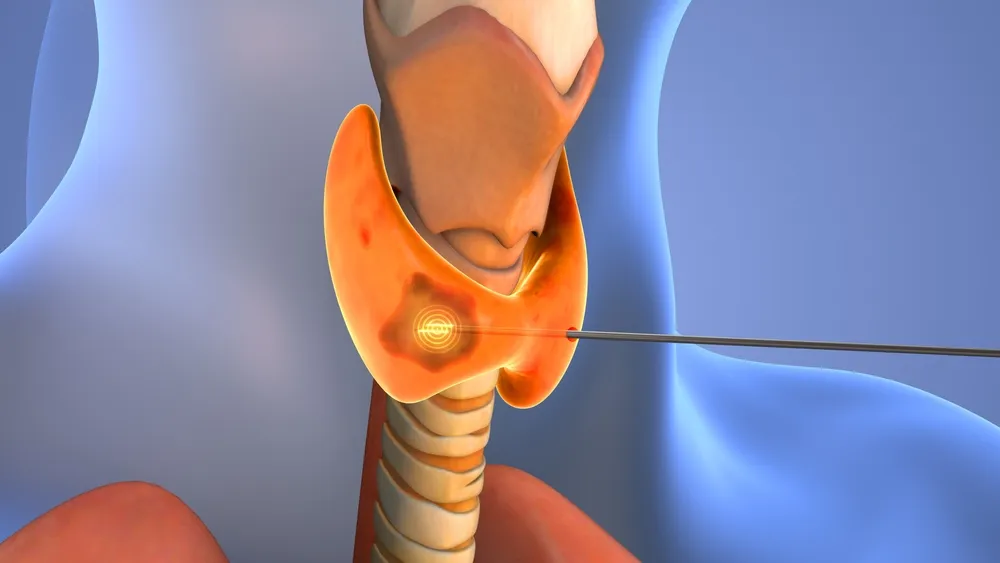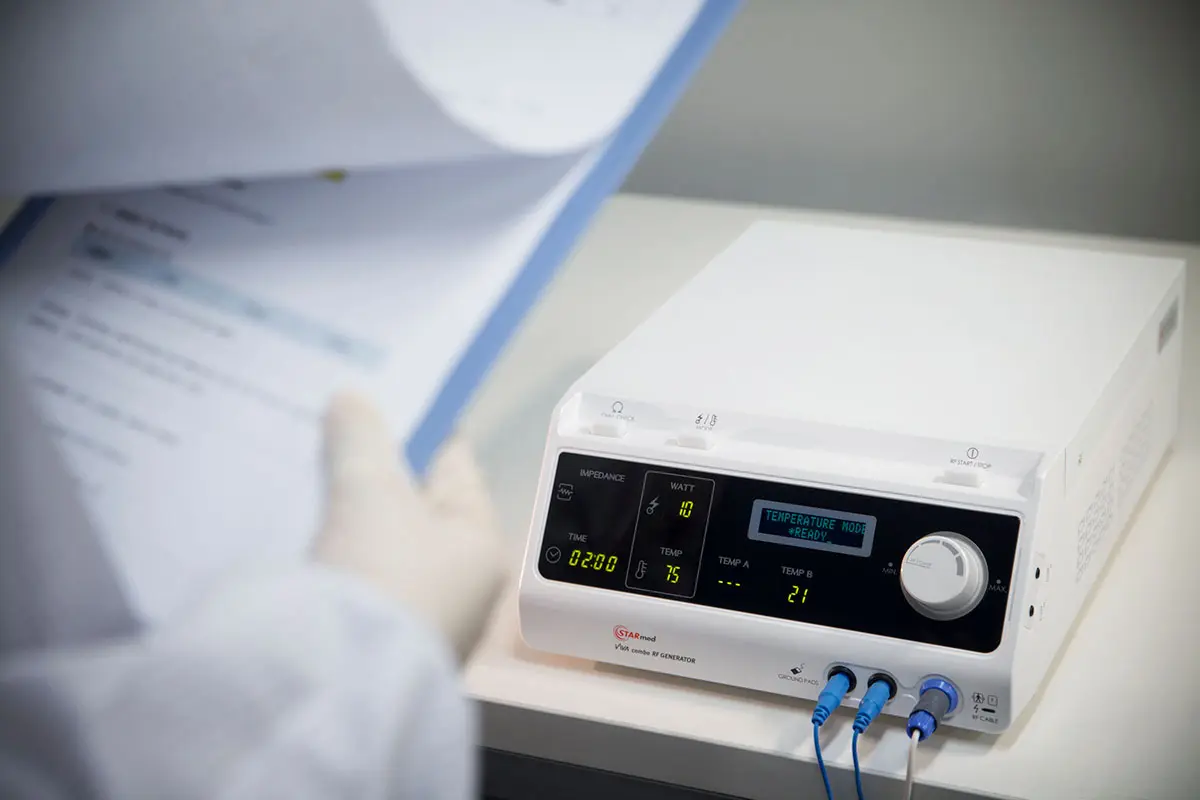Summary: New RFA practitioners must master patient selection to ensure safe and successful thyroid nodule treatment. This guide outlines clear criteria for choosing ideal candidates and offers practical tips for selecting your first cases with confidence.
- Patient selection directly affects RFA success and safety
- RFA is best for symptomatic benign thyroid nodules
- Confirm benign cytology with two biopsies before treatment
- Start with solid, moderate-sized (1–4 cm) nodules
- Avoid challenging locations or autonomously functioning nodules early on
- Ensure patients are suitable for outpatient procedures
- Begin with straightforward, accessible nodules
- Align patient expectations through informed consent
Selecting the right thyroid RFA patient is the first step toward a successful outcome. As a new practitioner, you may wonder, “Who is a suitable candidate for radiofrequency ablation of the thyroid?”
Optimal patient selection means choosing cases that match the strengths of RFA and your current level of expertise. Starting with the proper indications will set your thyroid RFA practice up for success. Continue reading to learn more about assessing candidacy for RFA.
Why Patient Selection Matters in Thyroid RFA
The benefits of RFA are most visible in well-selected patients. In fact, clinicians achieve higher success rates when applying RFA to carefully chosen benign thyroid nodules. This is especially true for new thyroid RFA specialists.
Experienced practitioners often stress this point. Dr. Catherine Sinclair, a Head and Neck Surgeon in Australia, emphasizes that patient selection is crucial to procedural success.
According to Dr. Sinclair, if you choose an appropriate first patient, RFA can result in significant nodule shrinkage. Per NASIT, patients often experience 50% to 90% volume reduction in 6 to 12 months.
However, Dr. Sinclair stresses that a poorly chosen case could lead to suboptimal results or patient complications. Thus, new practitioners have a responsibility to approach patient selection carefully in each and every case.
Remember, RFA is still a fairly new technique in many regions. Earning institutional support might depend on early positive outcomes. In essence, choosing the right patients may be key to demonstrating the value of thyroid RFA in your practice.
Indications: Who Is an Ideal Candidate for Thyroid RFA?
Current clinical guidelines and consensus statements outline the indications for thyroid RFA. These guidelines and indications help define the profile of an ideal candidate.
The following indications will help you understand which patients benefit most from RFA treatment for thyroid nodules:
Benign Thyroid Nodules with Symptoms or Cosmetic Concerns
The ideal RFA patient is one who wants to avoid surgery. They should have a symptomatic nodule that genuinely impacts his or her quality of life.
According to the most current ATA guidelines, RFA is indicated for patients with benign thyroid nodules that cause the following symptoms:
- Neck discomfort
- Swallowing difficulty
- Pressure symptoms
- Voice changes
- Visible lump or bulge concerns
For such nodules, RFA is now increasingly recognized as a first-line treatment. This is because it can ablate the nodule and preserve normal thyroid tissue.
Confirmed Benign Cytology
It is critical to confirm the nodule is benign before proceeding. Guidelines strongly recommend at least two separate ultrasound-guided biopsies showing benign results prior to RFA. Confirming benign pathology ensures you don’t delay surgery for a malignant nodule.
Nodule Size and Number
There is no size cutoff for RFA. However, experts suggest starting with nodules that are moderate in size. New practitioners should begin by treating nodules roughly in the 1 to 4 cm range. Nodules larger than about 4 cm may require more than one treatment session.
Additionally, RFA thyroid nodule treatment is typically used for single, dominant nodules. If a patient has a multinodular goiter, you might choose the largest symptomatic nodule to treat first.
Composition of the Nodule
RFA works best on solid or predominantly solid nodules. If the nodule is cystic, the recommended approach is to aspirate the fluid first or use ethanol ablation.
Patient Factors
Anyone is potentially a candidate for RFA if the nodule is appropriate.
The ideal thyroid RFA patient should be healthy enough for an outpatient procedure under local anesthesia. You’ll want to ensure your patient can lie flat with his or her neck extended for 30 to 60 minutes. Furthermore, confirm the patient isn’t extremely anxious about the procedure.

Tips for Selecting Your First RFA Cases
As you begin performing thyroid RFA, it’s prudent to “start low and go slow.” In the NASIT webinar “Patient Selection for the New RFA Practitioner,” experts shared advice on what to look for in a first case.
Here are some patient selection tips from Dr. Ralph Tufano, Thyroid Surgeon and NASIT President-Elect:
- Pick a Straightforward, Accessible Nodule. Choose a nodule that is easy to access with the RFA probe and easy to monitor on ultrasound. A mid or lower pole thyroid nodule is often ideal for the first case.
- Avoid the “Danger Zone” Locations Initially. Certain nodule locations require advanced techniques like hydrodissection to protect structures. New practitioners should be cautious about nodules abutting critical structures until they have more experience.
- Be Cautious with Autonomously Functioning Nodules. RFA is indicated for patients with toxic nodules who cannot or will not undergo radioactive iodine. However, the nodules tend to be highly vascular, and patients are often biochemically hyperthyroid. Success in toxic nodules can be a bit less predictable, especially for new practitioners.
- Don’t Tackle Very Large Nodules at First. For an RFA beginner, a nodule in the 2 to 3 cm range is ideal. You can likely ablate it completely with the moving-shot technique in a reasonable timeframe. Aim to work up to larger nodules over time.
- Emphasize Informed Consent and Expectations. Ensure your patient’s expectations align with what RFA can realistically deliver. When the right patient is educated properly, they are usually very happy with the outcome.
Finally, remember that thyroid RFA is an operator-dependent procedure. Outcomes improve as your skill level improves. As a new practitioner, you’ll benefit from starting slow and learning from each case.
Careful Patient Selection Is the Cornerstone of Success
With each well-selected case, you’ll be helping patients avoid surgery and relieve their symptoms. That is the true reward of thyroid RFA. Now you are ready to identify your first ideal candidate.





